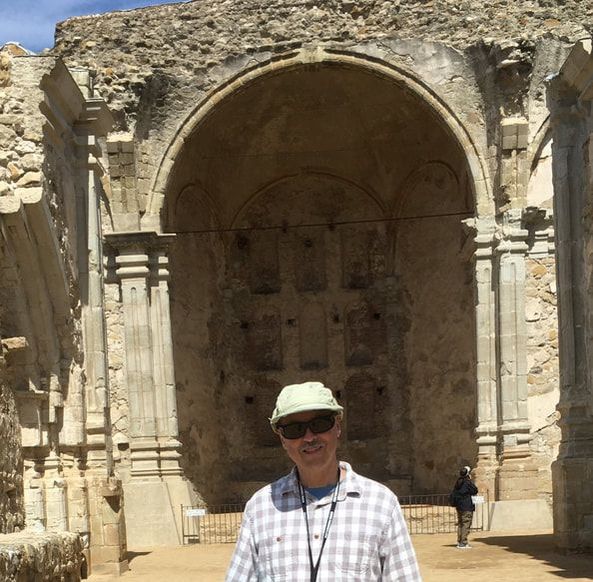In my neck of the woods (Connecticut) it’s way below normal temperature (in the 30s) and the fourth late winter (early spring) snowstorm has just begun.
We just returned from several days visiting family in Orange County, California – which I’ve always dissed as having boring weather where it’s always in the 70s and sunny – but this time it was a nice reprieve, even though it was colder than normal there (topping out at around 60 degrees).
We’re always looking for fun new things to do with our 5-year-old granddaughter, Eliza. This time we visited the mission at San Juan Capistrano, about a half hour drive from her home in Irvine. Ever since I learned that the migratory swallows always return to Capistrano on March 19, I’ve been intrigued with visiting, since that’s my birthday, St. Joseph’s Day.
We were departing on March 17, so we missed that by a couple of days, but we went anyway on March 16. We saw the former homes of some swallows, built under the eaves of some of the old buildings, but we didn’t see a single swallow. We learned that major construction to stabilize the mission church many years ago drove a lot of the swallows elsewhere – now the peak viewing areas are nearby highway underpasses – but in more recent years at least some have returned. However, I couldn't find any reports that they actually did return on March 19.
The highlight for me was seeing all the beautiful flowers and some trees, many of which I was able to identify with a brochure featuring the flora and their locations on the property. I don’t know why, but I enjoy these things more when I know what they are, and they are completely different from what grows where I live. Eliza had a great time feeding about a dozen huge koi that were swimming around a fountain, and she also stayed engaged as we walked around the premises for two hours with a phone-like apparatus that talked to us each time we punched a different number, to learn about the history of the place.
The mission was one of either 7 or 9 (accounts vary) established by Father Junipero Serra along the California coast. He was a Spanish priest who came to California in the late 1700s to convert the indigenous peoples he encountered. The talking history mentioned that the interaction between the Spaniards and the natives was “challenging” to the latter, but overall made it sound like they benefitted more than lost through European contact. They were given a choice of whether to come into the mission, and if they did they had to give up their culture and become Catholic. Some accounts say they were basically treated like slaves; the most generous interpretation is that they were treated like children.
Serra was beatified in 1988 (an important step toward sainthood), and canonized by Pope Francis in 2015, and was therefore referred to as “Saint Serra” in the explanations we read at the mission. There was some opposition to this process by some indigenous scholars (one called the missions “concentration camps” and “a place of death”), although according to Wikipedia, other native people supported it, saying on balance that Serra treated the Indians well and sometimes intervened to protect them from the rapes and beatings of the Spanish soldiers garrisoned at the missions. Some of his supporters say much of the criticism results from “ahistorical value judgments” – that old slippery slope, if ever there was one.
The photo above shows the ruins of the mission church, which collapsed in an earthquake just a few years after construction was finished.
The day after we visited the mission, we went to a bird sanctuary just a few minutes from Eliza’s house and saw hundreds of cliff swallows – the same species that made Capistrano famous.
They seemed to dive-bomb us, not out of hostility but because we just happened to be on their erratic flight paths. They are beautiful with iridescent dark blue backs. We also saw all kinds of other birds, from giant pelicans to tiny jeweled hummingbirds. Another highlight of our trip.

 RSS Feed
RSS Feed
